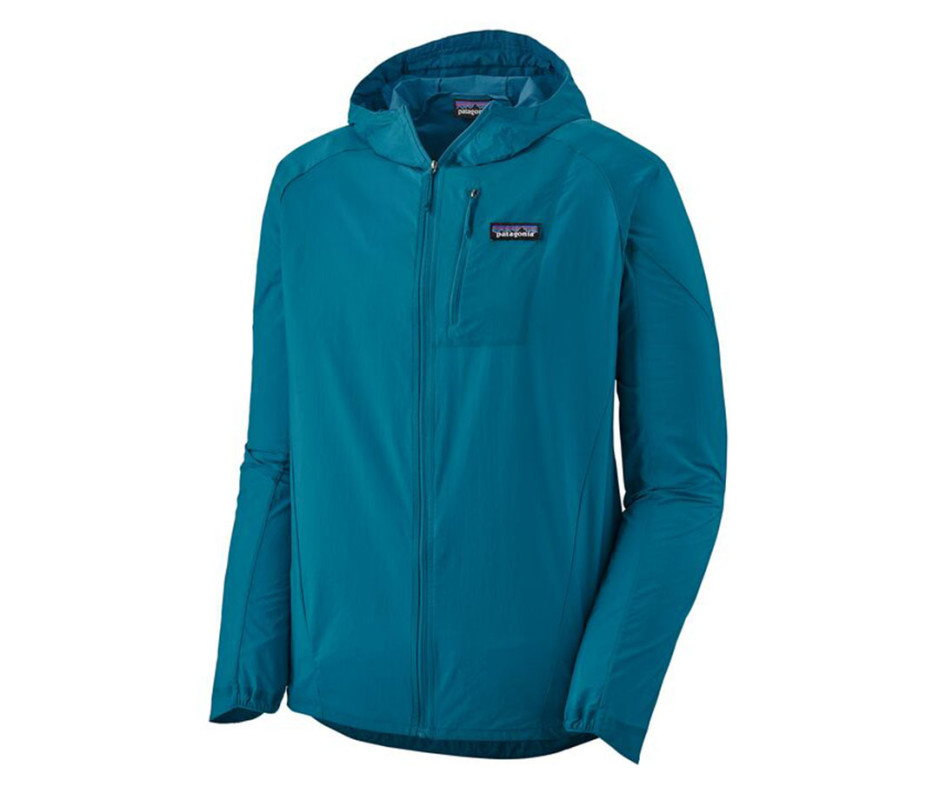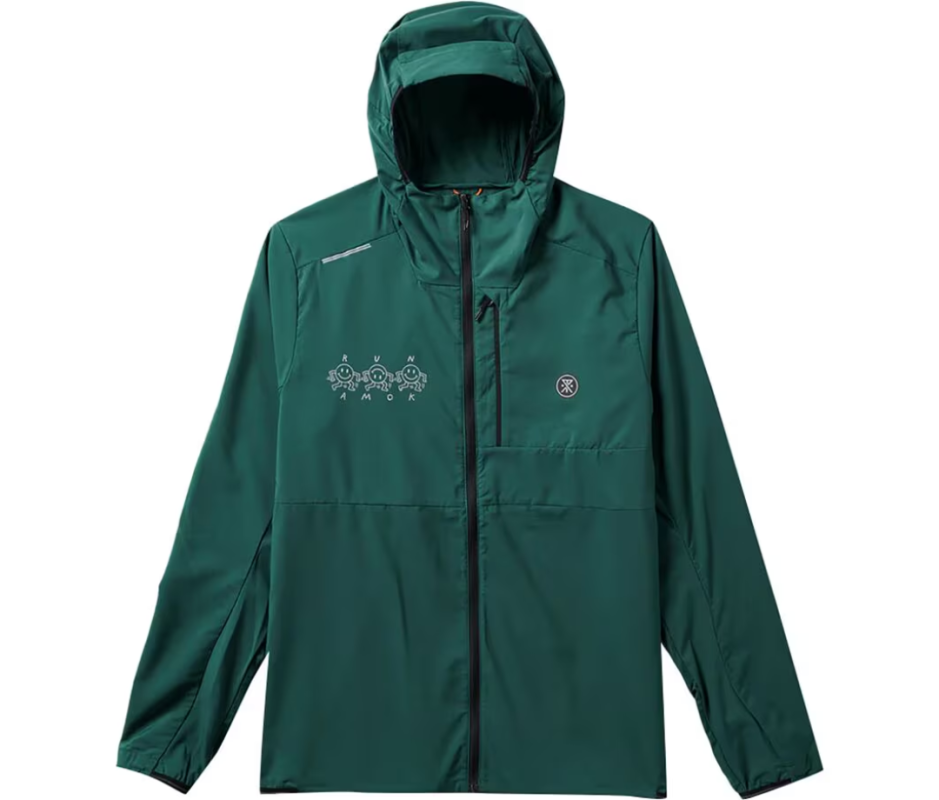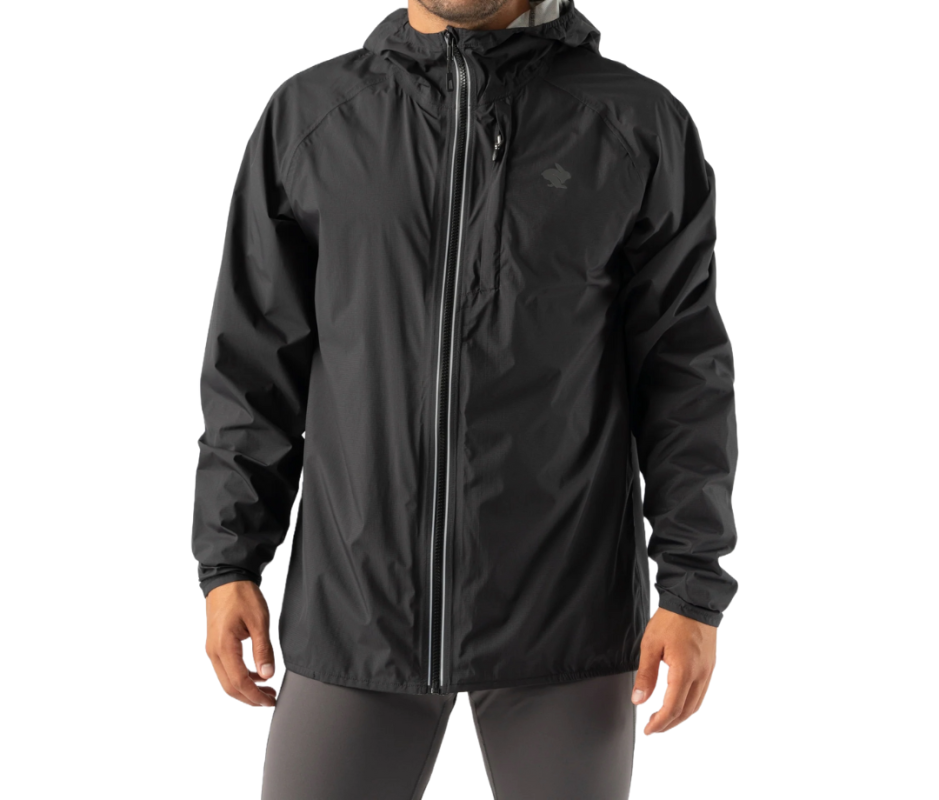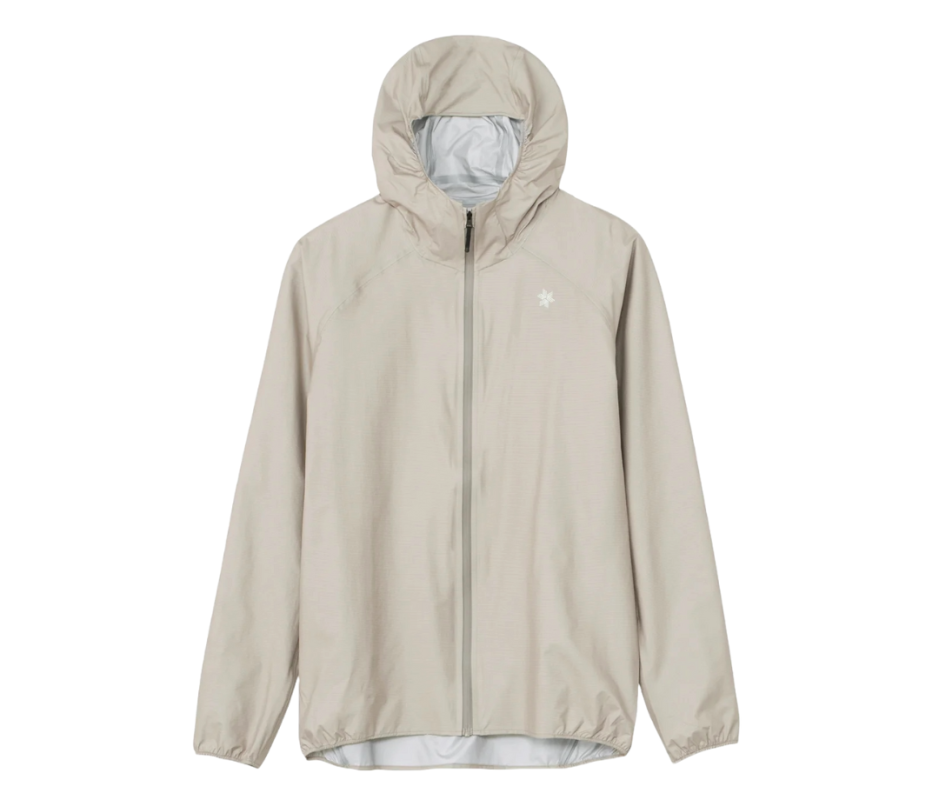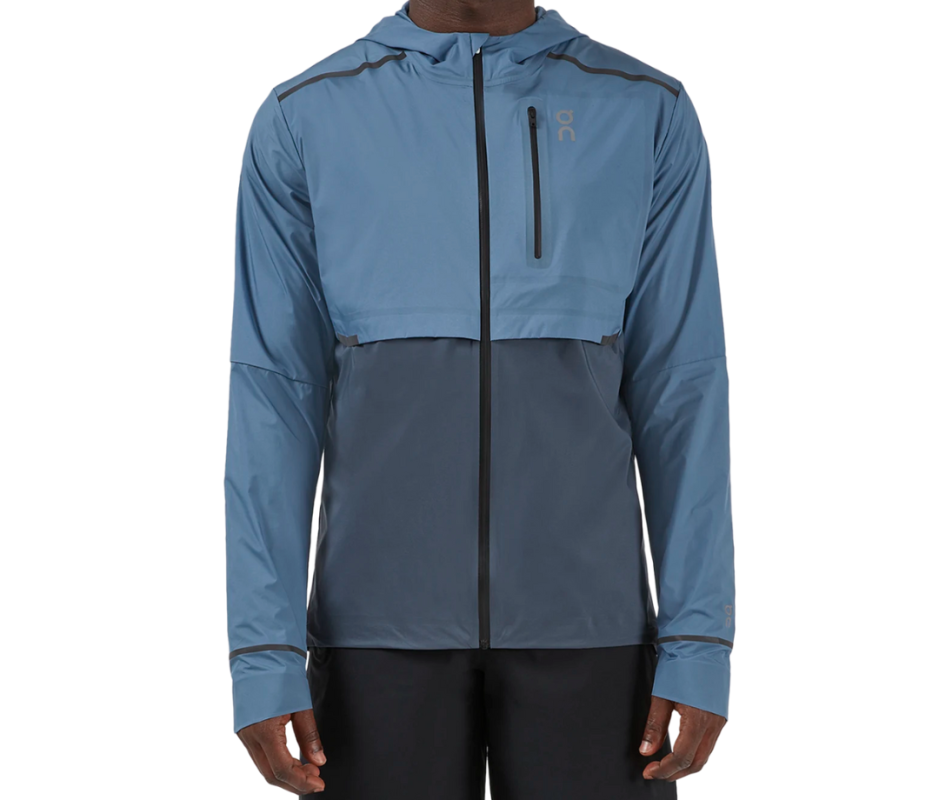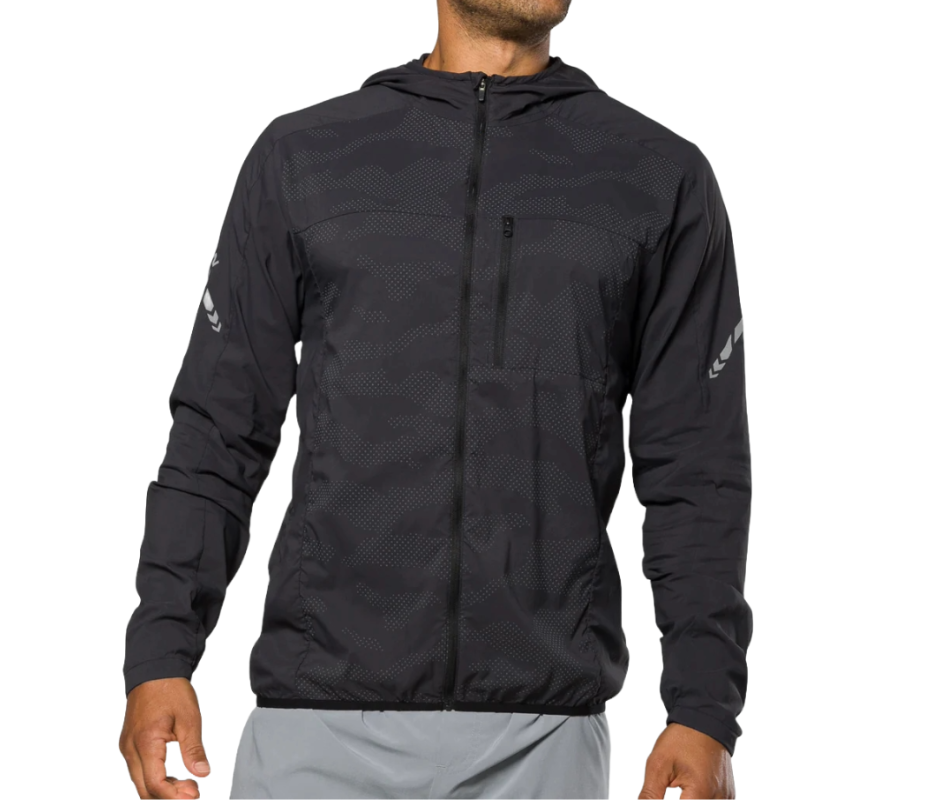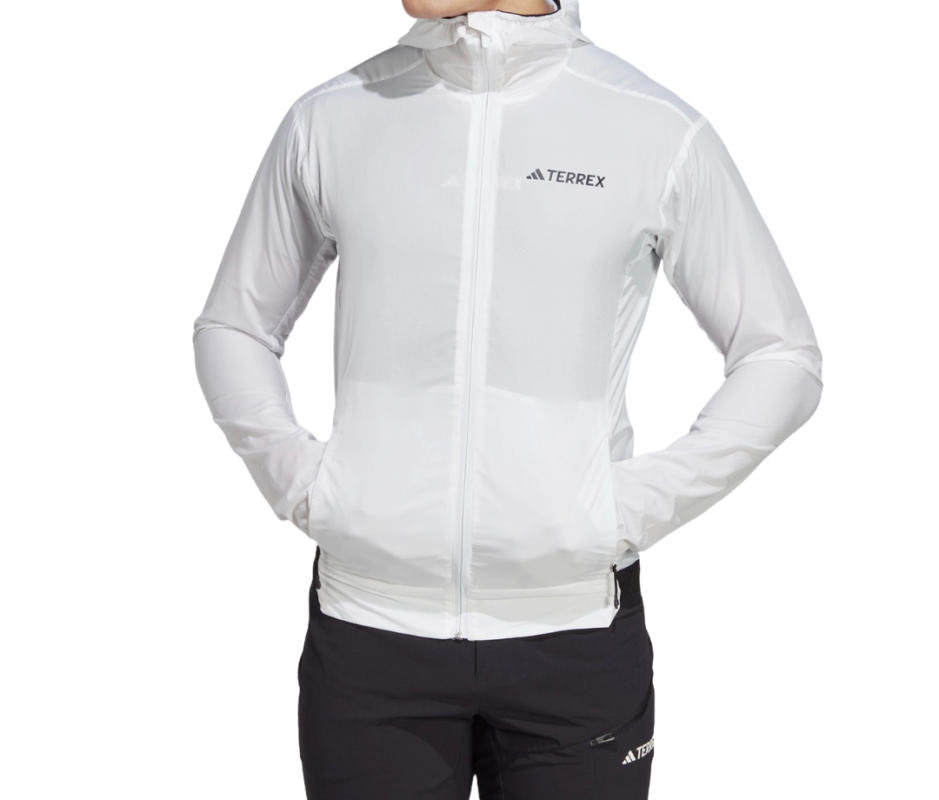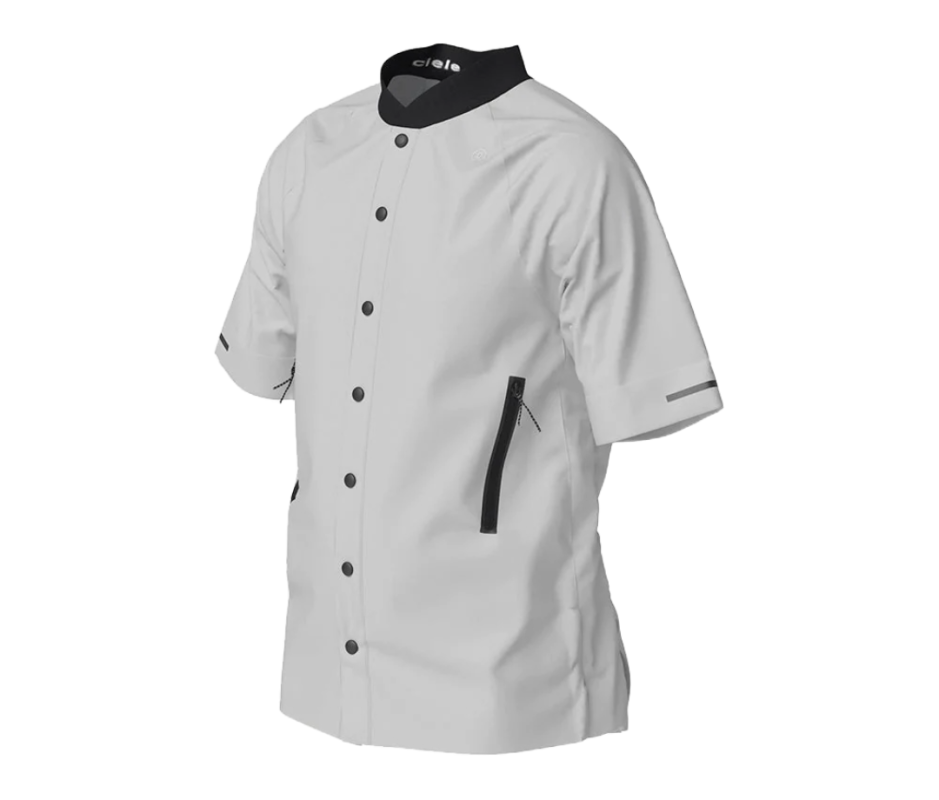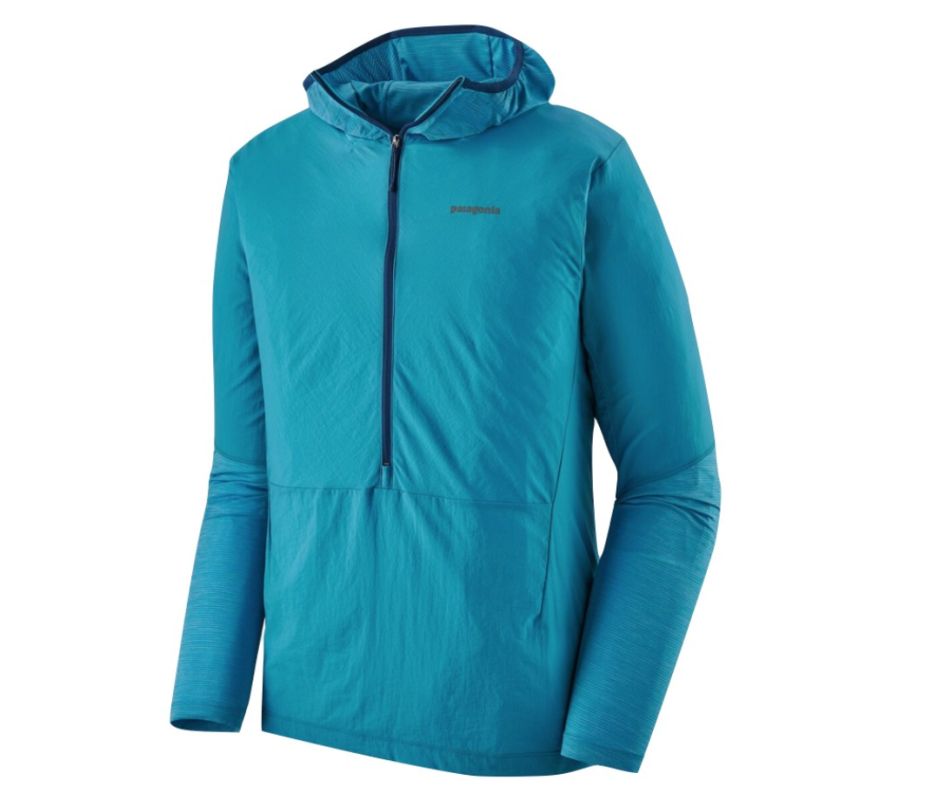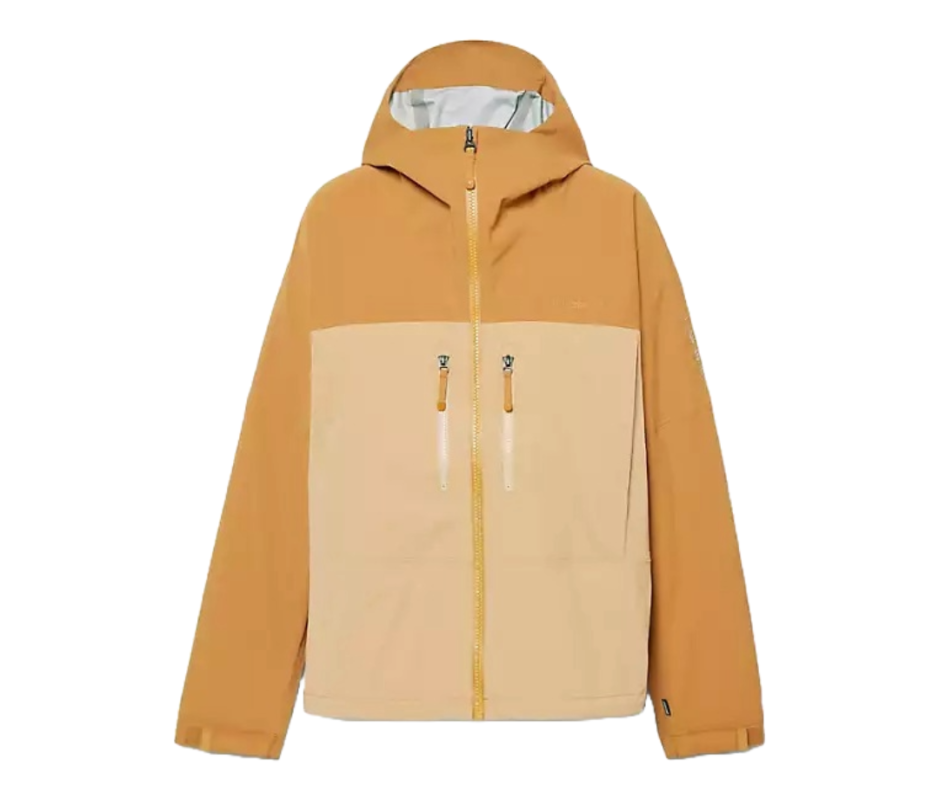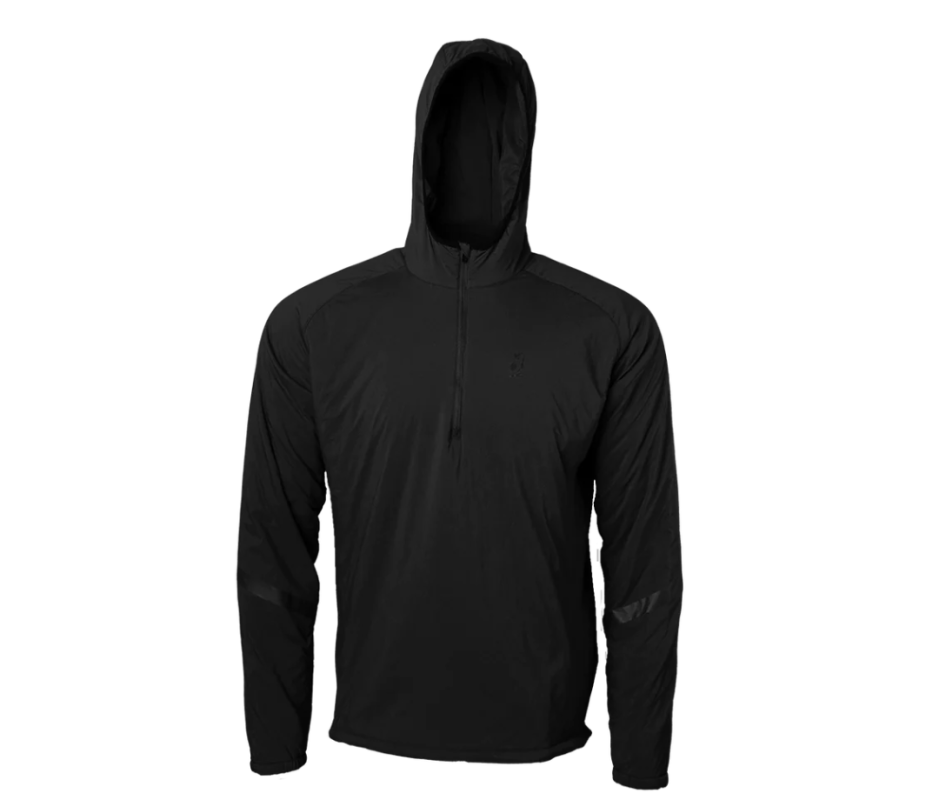Health
The Best Running Jackets of 2024 for Any Kind of Weather

Men’s Journal aims to feature only the best products and services. If you buy something via one of our links, we may earn a commission.
There’s nothing quite like running in perfect weather. But the reality is, if you’re serious about logging consistent mileage, there are going to be bad weather days when you need a bit of protection—especially as unpredictable spring weather throws rain and wind at you. On those unavoidable days, your running shoes can only take you so far. You need to pick up a running jacket.
A great running jacket serves many purposes. It protects you from the rain, keeps you warm, and breaks the wind. But it also needs to be breathable, so you don’t heat up so quickly that you tie it around your waist within five minutes. Therefore, we rounded up the best running jackets you can buy, saving you hours scouring online retailers for the perfect layer for your running needs. Our favorite turned out to be Patagonia’s Houdini jacket, which is lightweight, windproof, and has enough water-resistance to shed any drizzle encountered mid-run.
Related: We Tested 16 New Balance Running Shoes. These Are the Best
Best Overall Running Jacket: Patagonia Houdini
Courtesy Image
The Patagonia Houdini is so popular because it’s truly that good. The magic is in its simplicity; it’s a minimal jacket that works well for a variety of needs.
It’s windproof. The DWR finish works well, and I found it to work great in a light but consistent drizzle. And it’s so breathable. For a jacket that cuts wind and sheds light rain, you’d expect it to be somewhat stuffy inside. Not so, the jacket really allows moisture to escape even as you ramp up intensity.
There’s one simple pocket (which the jacket packs into, great for long runs when it’s time to shed), and two simple cinch cords—one in the hood and one in the waist, but the cord slips out of the plastic cinch track for me, which was a mild annoyance.
That said, the Patagonia Houdini is the clear choice for a basic, do-it-all running jacket. Even in cold weather, layering with this as a shell would work great, but be warned: The Houdini fits slim, so size up if you intend to do heavy layering.
Most Comfortable Running Jacket: Roark Secondwind 3.0
Courtesy Image
The latest Roark Secondwind 3.0 running jacket is super breathable, soft, and stretchy, which makes it comfortable layer for spring. I love the thumb loops on the cuffs, because while I’m not a fan of running with gloves, I like that my hands are covered when warming up. The jacket does feature a DWR finish, and while the material is much softer (but slightly more absorbent than the Houdini above), it performs just fine in light rain. When you feel how nice the material is, you won’t want to take it off.
Most Versatile Running Jacket: Rabbit Treeline
Courtesy Image
The Rabbit Treeline is a versatile jacket that looks great and performs well for most of my needs. It’s waterproof and water resistant, but it doesn’t have crazy high proofing expectations. Indeed, the company prioritized a balance between water protection and breathability, and I think they’ve found a perfect sweet spot between the two.
Related: The Best G-Shock Watches of 2024
Best Rain Jacket: Goldwin Pertex ShieldAir A/L
Courtesy Image
Ever since I saw Dylan Bowman wearing a prototype of it last fall, I’ve wanted to try this jacket. Luckily, the Goldwin Pertex ShieldAir A/L delivers everything I hoped, and perhaps more. While it’s certainly a premium shell, it’s extremely capable.
Historically, great waterproofing meant terrible breathability and vice-versa. Pertex ShieldAir has helped bring a better balance to that ratio, especially as it pertains to endurance sports. The A/L jacket, made in partnership with Bowman’s company Freetrail, is an excellent piece if you run a lot in rainy weather but need your jacket to breathe well and keep you cool.
I wore it during a 45-degree, steady downpour mountain run. I started off the effort cold, but as I warmed up I never felt like I needed to shed the jacket. Underneath, I was wearing just one long sleeve base layer that remained surprisingly dry.
My only qualm with this jacket—especially for the price—is that there’s no pocket. The jacket packs down super small, but not into itself like the Houdini, rather into a separate stuff sack.
Most Breathable Running Jacket: On Weather
Courtesy Image
The On Weather Jacket was designed with breathability top of mind. The latest version features a blend of materials that protects you from the elements, specifically cold, wind, and very light rain. The sizable vents along the back of the jacket help keep your body temp in check, and the stretchy, soft underarm material is both breathable and flexible in motion.
It’s great for fringe-weather runs and ideal for mild weather—think mostly dry, breezy, sub-50 degree temps. I do get a little caught up on the price, however, as I think for over $200, it doesn’t quite provide the full range of features as some competitors.
More Running Jackets We Love
Best Jacket for Night Running: Nathan HyperNight Stealth
The Nathan HyperNight Stealth is an ideal jacket for night running or early morning running when visibility is key. It features a camo reflective material contrasted against its black fabric, and is surprisingly easy to see at night. It makes a great city running jacket.
But it’s not just visibility that the jacket does well. I love the material feel on this Nathan Stealth. It reminds me a lot of the Roark as far as softness and stretch, and it has great breathability with back vents cut in. There is a hood cinch and a chest pocket as well, which help round out a solid feature set for the price.
Best Breathable Windbreaker: Adidas Terrex Xperior Windweave
The Adidas Terrex may be the most supple windbreaker I’ve ever tried. The material feels futuristic, almost impossibly soft for a proper shell. And for something that cuts wind so well, I can’t believe it sheds my internal heat effectively. It’s become my favorite option when running on blustery mountain trails. Aside from the excellent material, the jacket also has clever zippered pockets with breathable backing to act as cooling vents—or, you know, they can be used as pockets.
Best City Running Jacket: Ciele OTFInsulator
The Ciele OTFInsulator is perhaps the most innovative jacket on this list, at least in terms of trying something new. Rather than designed to be shed once you warm up, the OTFInsulator is a short sleeve insulated jacket, so that as you warm up you don’t have to take it off. Instead of a zipper, snap buttons make it easy to pop it open in different places if you need to cool yourself down.
This Ciele jacket features warm Polartec Alpha insulation that keeps the core feeling protected but doesn’t cause you to overheat. The dual zipper pockets are perfectly placed to warm your hands while waiting at stoplights, and the neck cuff is super soft. It nails chic, city running style, too.
The drawbacks are water-resistance and versatility. This jacket just isn’t designed for wet conditions. It’s perfect for running in the winter, through the city, when you know the conditions.
Best Running Jacket for Warm Weather: Patagonia Airshed Pullover
The Patagonia Houdini has a high tech sibling: the Airshed Pullover. It has amazingly soft material and boasts many of the same features as the more traditional Houdini. It fits close to the body, and I’ve even worn it as my sole layer for breezy trail runs. The jacket flexes to provide an ideal range of motion for running, and the stretchy hood is comfortable. If you run in a warmer climate or really just need a simple, stashable windbreaker, the Airshed Pullover is the optimal pick.
Best Jacket for the Coldest Runs: Timberland Caps Ridge Waterproof Motion
The Caps Ridge Waterproof Motion Jacket is perfect for cold, wet running conditions. The sleeves, rather than being sewn on at the shoulder, are a single horizontal layer running across the jacket, which gives you much better range of arm motion than some rigid waterproof shells. The jacket also has breathable pit-zips that allow you to get a nice breeze under your arms in case the thicker shell starts warming you up.
Perhaps the coolest feature for runners, however, is that the jacket has built-in backpack straps so you can take the jacket off and let it hang on your shoulders. This means if you fully warm up and don’t bring a pack, you can easily toss the jacket on your back and keep running.
Other good features include a hood, waist cinch, and well-placed pockets. It’s a thick, fully-waterproofed jacket, so it will feel less breathable than others designed specifically made for running. However, for truly cold and wet running, this is a great choice.
Best Running Sweatshirt: Outdoor Vitals Ventus Active Hoodie
Sure, a big cozy hoodie is awesome to wear around the house in chilly weather. However, most hoodies are cotton or cotton-blended, and the reality is that when soaked with sweat, snow, or rain, they become heavy, cumbersome, and cold. Instead, rock this Outdoor Vitals Ventus Active Hoodie, an extremely tech-forward hoodie that will perform with you during chilly runs.
OV is most popular in the backpacking space because they make ultra light, durable gear designed for adventurers. But many of the principles apply to running too, and the Ventus Active Hoodie is designed for high-output activities. The 3DeFX insulation is warm but breathable and stretchy, so that no matter how you’re moving, you don’t feel restricted. The hoodie is also designed with a simple mesh layer, sans insulation in the armpits, which really helped keep me cool on trail.
Let’s be clear, this hoodie is warm, and it’s not particularly water-resistant. But it’s great for truly cold efforts, and is a nice option for high-elevation runs or any run where you need to layer heavily.
Related: The 7 Best Moisture-Wicking Shirts for Spring Runs and Workouts
What to Look for in the Best Running Jacket
When considering the best running jacket for your needs, start with the conditions in which you’ll be most often using it. For many of us, precipitation is the most irritating barrier to an enjoyable run, so many of the jackets on this list are water-resistant or even waterproof.
If you typically run in mild conditions, then a windbreaker is a great choice, as many offer some water resistance, provide a bit of warmth, but remain breathable. However, if you often run in the mountains or in cold winter weather, there are great insulated options on this list that don’t feel suffocating when your body warms up. For those in rainy climates, there are a couple of great waterproof shells out there that provide a meaningful rain barrier, while still maintaining the ability to shed internal moisture.
Layering
I tend to sweat a lot, so running with a jacket is tough for me. I need one that can regulate temperature well enough to protect me from the elements, but not cause me to overheat. And let’s get real, many of us will eventually shed our jacket when we get too hot, so features that make it easy to stash and stow are super useful.
Therefore, I’m cognizant of layering when going on bad weather runs. In cold, wet conditions, I wear a moisture-wicking T-shirt, an insulating layer, and a waterproof shell. But as soon as I warm up, I shed my insulator, because once that’s soaked wet, the negatives outweigh the benefits. That said, I keep it simple: I wear one base layer and my running jacket, unless conditions are varied enough to warrant more.
When I run with a jacket, I often bring a pack or vest—even just a simple, minimal hydration pack. That way, I have an easy, hands-free spot to stash my jacket in case I get too warm. A small pack usually fits under a rain shell, but options like the Salomon Bonatti Trail jacket provide a bit of extra material designed to be worn over a pack.
Water-resistant vs. Waterproof
Many jackets will be marketed as water-resistant. Some are even labeled waterproof. What’s the difference, and why does it matter for running?
Running generates body heat and moisture, which is actually a reason to avoid fully waterproof shells. If you’ve ever worn fully-waterproof rain jacket on a tough hike or run, it can feel like a non-breathable plastic bag. However, thanks to new and developing technology, some waterproof running jackets are designed to shed internal moisture and feel breathable
For many of us, a water-resistant shell will do fine for light rain and maintain some breathability over a fully waterproof jacket. Water-resistant running jackets are treated with a coating, often called DWR (durable water repellent), but the material itself is water permeable. DWR formerly contained PFAS (i.e., forever chemicals), but most companies have ceased to design apparel with PFAS because California and other states have mandated a partial ban on these chemicals by January 1, 2025.
Waterproof jackets use a DWR finish as well but are also designed with water impermeability in the material to increase their waterproofing. They typically have three layers. The outer layer is finished to repel water, but the middle layer is impermeable to water droplets because the membrane weave is so fine. To make the jackets more breathable, the middle layer leaves space for air and water vapor to pass through so your body heat can be expelled.
Breathable designs, such Pertex’s ShieldAir textile, have taken the waterproof and breathability to new heights. A jacket designed for running isn’t as waterproof as, say, a hunting jacket, because sweat buildup isn’t as much of an issue. So Pertex ShieldAir and design like it take the waterproof membrane and makes it slightly more breathable, but slightly less waterproof. A Pertex representative put it this way: “You may not want to sit for two hours in a puddle with a ShieldAir jacket, but you’ll feel much more dry and comfortable if you’re running for two hours through the rain in one.”
Why You Should Trust Me
I’ve tested dozens of running jackets from numerous different brands. I run a lot, for enjoyment rather than competition. That means I care more about how I feel when I’m running than how fast I’m going. Sure, it’s fun to improve, and indeed running in well-designed jackets helps achieve better performance.
My running jacket needs are representative of a large group of runners. I run in all types of conditions, from cold and windy mountain trail runs to rainy road runs. The best running jackets chosen by the Men’s Journal test team help men run more comfortably, effectively, and enjoyably.
Health
Asperger syndrome: What parents should know – CHOC

Published on: May 14, 2024
Last updated: April 25, 2024
A CHOC expert discusses why Asperger syndrome is not diagnosed anymore, and talks about signs of autism spectrum disorder (ASD).
Link: https://health.choc.org/asperger-syndrome-what-parents-should-know/
Health
3 Women With Eczema Describe the Ways They Combat Nighttime Flare-Ups

If you have eczema, you know what it’s like – that frustrating struggle to catch some ZZZ’s.
The problem is at once physical and emotional. “When my eczema is flared, nighttime often fills me with anxiety,” says Nicola Johnston, a digital content creator who lives in Carlisle, England, near the border of Scotland. “I have experienced nights in so much pain that I cannot sleep, and I’ve scratched so hard that my sheets were covered in blood. This is why I’ve worked to establish a good evening routine that will allow me to have a comfortable night’s sleep and get the rest that my body needs.”
But that rest can be elusive when you’re tormented by “itching, flaky skin, raised red rashes, cuts, skin tightness,” the symptoms listed by Elise Loubatieres, a London-based editor and beauty influencer. In many patients, eczema is itchiest at night, sometimes due to a lack of time for self-care earlier in the day. Natalie Findley, a holistic chef from Whistler, British Columbia, has had a similar experience. “Nighttime flare-ups taught me that something wasn’t working,” she says. “Not getting enough sleep was not doing me any good.”
If you want to turn down eczema flare-ups, finding out what works best for you calls for trial and error. But it also helps to get advice from people who understand firsthand what you’re going through. Here, three women who’ve been there offer tips on how to prepare for bed, get as comfy as possible, deal with symptoms, and reset your emotions in the morning.
When it comes to preparing for bed, Findley favors consistency. “I try to keep my routine the same each night,” she says. Before doing anything, she sets “an intention to sleep better.” From there, Findley likes “to cleanse and moisturize my skin, drink some herbal tea, do some journaling, read, express gratitude, and then I am in bed by 10 p.m.”
An equally firm believer in the step-by-step approach, Johnston focuses first and foremost on comfort. “I start my bedtime routine by having a lukewarm bath to soothe my skin, if my skin is feeling particularly flared,” she says. “I then apply an emollient-based product that is going to lock in moisture and be slowly absorbed through the night. I put on lightweight satin nightwear that keeps me cool. In making up my bed, I personally prefer a silk pillow, as this is gentler on my facial eczema and doesn’t absorb any product I apply to my face like a cotton material would.”
Loubatieres scrupulously preps her skin and takes medication to prevent symptoms later. “I have been prescribed antihistamines to help with the itching,” she explains. “I also make sure that I apply emollients to my skin liberally and frequently in the hour leading up to bedtime.”
To Findley, the choice of bedding fabric is less important than the way it’s washed. “I don’t use any particular kind of sheets to relieve my eczema, but I use natural and clean laundry detergents.” she says. “Even though many regular products claim to be clean, they use a lot of harmful chemicals and ingredients in detergents that aggravate eczema and your overall health. I use detergents that are hypoallergenic and without any fragrances. My favorite laundry detergent is Tru Earth.” Her bedside companion is also natural and gentle: “If I need some relief, I always use calendula and comfrey-based salve, with some shea butter, to calm the itchiness and dry skin.”
Johnston has an unusual trick for dealing with one of eczema’s side effects – a trick that involves a trip to the nail salon. “A great tip I have found is having acrylic gel manicures,” she notes. “It means that your nail itself becomes thicker and doesn’t break your skin when you’re scratching in the night. This has been a great help with healing my eczema.”
Aware that overheating can bring on eczema, Loubatieres takes a proactive approach. “I try to stay cool using a stand-alone fan, and I also use a handheld fan to pinpoint itchy areas for some relief,” she says. “I ensure that my sheets and sleepwear are either 100% cotton or silk to reduce irritation. I also have eczema gloves and Cosi Care [aka “safe scratchers”], which are itching tools that allow you to satisfy an itch without causing damage.”
Whenever she begins to feel itchy, Findley does simple breathing exercises to calm her body. “I close my eyes, breathe in slowly and count to five, and hold for 2 seconds, then breathe out slowly and count to seven. Or I will just breathe in slowly until my chest and belly are full with air, hold for a few seconds, and breathe out slowly all the way. I repeat this multiple times until I’m relaxed. I also imagine myself sinking into my pillow as I breathe out, and it relaxes me and my muscles until I finally fall asleep.”
Johnston tries to nap during the day whenever possible. That way, in the event of a nighttime flare-up, she’s not completely exhausted the next day, And the extra rest is also calming. “By keeping my daytime stress levels to a minimum,” she says, flare-ups become less likely.
As Loubatieres sees it, you’ve lost the battle when you give in to the urge to itch. “At night I tend to get what I call ‘scratch attacks,’ where I uncontrollably and incessantly scratch despite breaking skin and causing myself pain,” she says. “It feels very satisfying in the moment and provides relief from that bone-deep itching sensation. But I try to get up and distract myself in some way. If I stay in bed and don’t keep my hands busy, I’m more likely to indulge in a scratch.” Indeed, taking up a hobby – drawing, knitting, playing guitar, anything that involves using your hands – can be an ideal diversion between a flare-up and the welcome moment when you feel really sleepy.
In the light of day, after successfully dealing with her nighttime flare-ups, Findley developed a fresh philosophy. “I made it a habit to clean up my diet and reduce stress and anxiety with meditation, journaling, and sleep hygiene. To treat the root cause of my issue, I switched to a plant-based diet. I also cut out dairy, as it’s pretty inflammatory. … I drink a lot of water each day. Now my eczema has cleared up! I find that fueling your body with the proper nutrients will support your immune system, therefore improving your eczema.”
Johnston emphasizes the importance of knowing your true self. “Often, it feels like you are your eczema, like it’s a defining characteristic,” she says. “It’s important to learn that your value comes from you and not your skin. I also learned to be kind to my skin. Not looking at it with hatred and resentment, but to see my eczema as a friend that was telling me there is an imbalance somewhere that I need to put right. It’s really important to listen to your body and notice your triggers.”
Whatever strategies you adopt, Loubatieres says, you should treat yourself with compassion. “After a scratch attack, I personally get a huge amount of guilt,” she admits. “I think I’ve caused my skin a lot of harm. However, I have to remind myself that it’s a condition that I cannot control. Skin eventually heals.” Her best advice for getting a good night’s sleep: “Don’t be so hard on yourself.”
Health
The Challenges of Parenting a Child With Eczema

A loving mother wants, above all else, good health for her child. Imagine, then, the emotional impact of discovering that your baby has eczema, of wishing more than anything to take away the itching and irritation. And imagine the worry when a woman with eczema becomes pregnant. The what-ifs are huge.
Fortunately, there is excellent information — and inspiration — to help a woman in either situation. Here, two moms reveal the great lengths they went to in their determination to give their children relief and good health.
Meghan Elliott, who lives in Kankakee, Illinois, is a busy mother of two: Nora, 4, and Charlie, 1. After the shock of finding that Charlie had eczema from birth, Elliott embarked on a quest to do everything she could to help him. She researched his needs, and then made sure the health system met them.
“Charlie had rough, scaly, bumpy skin,” says Elliott, an operations manager for the marketing company Mayhill Moon. At first, the inflammation was mostly on his cheeks and thighs, but it later began to develop on his elbows. “My son’s pediatrician officially diagnosed him with moderate to severe eczema and suggested we take him to a pediatric dermatologist.” Not a bad idea, but she and Charlie would have to spend months on a waiting list, which Elliott found “extremely frustrating.”
That’s when she set out to learn as much as possible about Charlie’s condition. One thing that struck her was that many children with eczema have moderate to severe food allergies. “Seeing how long it took to get referred to a pediatric dermatologist, I then took it upon myself to call a pediatric allergist. Thankfully, they got him in fairly quickly, and we found out that Charlie is severely allergic to all forms of eggs and also has a lactose intolerance.”
This was a watershed moment. “What we do now is lather his cheeks and chin with CeraVe Healing Ointment before and after he eats so as to not irritate his skin,” she says. “The ointment helps act like a barrier to any food that could cause a flare-up.”
Elliott carefully analyzed every aspect of Charlie’s routine to give him relief in a variety of ways. “One thing that has helped my son is giving him a bath every night,” she says. “I thought this would dry him out even more, but our dermatologist said a quick 5- to 10-minute lukewarm bath – after which we pat him dry and immediately lotion him up – will keep all the moisture in his skin. We use CeraVe lotion, shampoo, and body wash during his bath times. We also apply CeraVe healing ointment on his cheeks throughout the day to keep moisture locked in. Charlie was also prescribed two topical ointments to use as needed as well as an oral medication to help when he gets really itchy.”
To help him sleep, Elliott relies on the most gentle bedding. “We use bamboo crib sheets, and they are very breathable – when we use a flannel crib sheet, his cheeks are very irritated when he wakes up,” she says. “We also do a lot of bamboo clothing. He can wear cotton clothing, too, but we definitely stay away from any wool or polyester.” Charlie is now doing well. “We have a schedule of doctor follow-ups every 3 to 6 months, and he is doing so much better compared to where we were a year ago.”
The emotional toll of worry and constant care is considerable, however. “Parenting a child with eczema and food allergies is exhausting and frustrating,” she says. “Still, push for help in getting your child relief. My advice for other parents also going through this is to always be your child’s advocate. They can’t advocate for themselves, so it is our responsibility to do that for them.”
Karen Fischer is an award-winning nutritionist and author who lives and works on Australia’s Gold Coast. Dedicated to helping people with eczema through her online support network, she’s the owner of Skin Friend, a skin care company. Her own story – and that of her daughter Ayva, now 22 – is the reason she has made eczema relief her work and passion.
“I have lived the pain of head-to-toe eczema,” Fischer explains. “I have health practitioner qualifications, but I did not truly understand eczema until I lived it.”
Before becoming pregnant with Ayva, Fischer found herself dealing with the skin condition. “My eczema started off as a tiny patch,” she recalls. “After a bout of work stress, it suddenly spread to my entire body. Every time I ate, it would spread. Some nights the itch was so bad I could not sleep. I had to constantly wash my sheets, I could not eat out with friends, I was socially isolated. No one understood, and I spent a lot of time at home crying.”
Noticing the link between food and her flare-ups, Fischer took a close look at what she ate. “Your skin is literally made from the foods you eat, so it made sense to change my diet,” she says. “Genetics play a role, but I believe that eating healthy, low-chemical foods can compensate for these genetic defects.” Identifying which foods seemed to trigger her eczema – and eliminating them – helped Fischer get better.
Her pregnancy, fortunately, proved uneventful. “I had suffered from hand dermatitis before I became pregnant,” she says. “With healthy eating, it soon went away, so I had a rash-free pregnancy. However, Ayva developed eczema 2 weeks after she was born.” Fischer was devastated to see Ayva suffer, and the baby had difficulty sleeping, but it didn’t occur to the new mom right away that she could approach her daughter’s skin condition the same way she had managed her own. “I thought eczema was a genetic condition and there was nothing I could do, so I used topical steroids to unsuccessfully treat her eczema,” she recalls.
Then, a breakthrough: “A nurse caring for Ayva told me about food sensitivities, and she set me on the path that led to my daughter’s eczema clearing up. Nutritional biochemistry was my favorite subject at university, so I designed a diet specifically for Ayva based on the research I had read from various hospital allergy units. Ayva’s skin cleared up, and we gradually expanded her diet. The right foods can make your child’s body resilient.”
Today both mother and daughter are happy and healthy. “Eczema is a complicated skin disorder and everyone is quick to give you advice,” Fischer says – and then offers up some advice of her own. As she sees it, “Healthy eating is the long-term, permanent solution.”
-

 African History4 months ago
African History4 months agoBlack History Facts I had to Learn on My Own pt.6 📜
-

 African History4 years ago
African History4 years agoA Closer Look: Afro-Mexicans 🇲🇽
-

 African History1 year ago
African History1 year agoPROOF AFRICAN AMERICANS AIN'T FROM AFRICA DOCUMENTED EVIDENCE
-

 African History2 years ago
African History2 years agoHow Did Normal Medieval People Survive Winter? | Tudor Monastery Farm | Chronicle
-

 African History3 years ago
African History3 years agoThe Entire History of Africa in Under 10 Minutes – Documentary
-

 African History3 years ago
African History3 years agoWhat happened to the many African Kingdoms? History of Africa 1500-1800 Documentary 1/6
-

 African History2 years ago
African History2 years agoAFRO MEXICO: Black History In Mexico!
-

 African History1 year ago
African History1 year agoA Black African King in Medieval European Art

